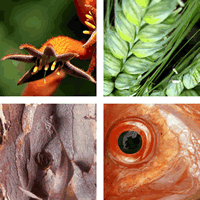IMC activities in 2013/14
Since the introduction of the IFS in 2010, the Industry Management Committee (IMC) has governed the collection, management and use of industry funds to deliver a biosecurity Scheme that benefits the Western Australian sheep and goat industries.
During the 2013/14 year, the IMC held three ordinary meetings and one extraordinary meeting. The focus of these meetings was to receive briefings and make decisions around the collection and remittance of producer contributions, progress of the IFS-funded program and the general governance and effectiveness of the Scheme.
A key issue identified by the IMC was the change under the new Biosecurity and Agriculture Management Regulations that prevents the Committee from knowing the exact locations of properties quarantined for virulent footrot. The IMC has been pursuing the release of this information to ensure they have a clear understanding of the status of the footrot control program. This understanding is needed for effective decision-making. Furthermore, the IMC believes it is important for this information to be available more broadly to ensure people, such as stock agents and truck drivers, are aware of the quarantine status of properties and take the appropriate precautions to prevent the spread of the disease.
Summary of key IMC activities during 2013/14
- 3 committee meetings, 1 extraordinary meeting
- discussion with the Biosecurity Council of Western Australia on biosecurity roles, responsibilities and principles
- development of alternative options for the control of virulent footrot in WA
- investigating the possibility of undertaking research into the effectiveness of a new footrot vaccine in WA conditions
- monitoring agent/processor remittance of contributions
- communication and promotion of the IFS to industry
- industry consultation on proposal to include other declared pests within the remit of the Scheme
- extension of the Scheme to include the whole of Western Australia
- determining the 2014/15 IFS contribution rate, area of operation and programs.
Options for the control of virulent footrot: The IMC have agreed to examine different options to minimise the risk of disease-spread from quarantined properties opting for disease control (rather than property-level eradication) that may be included within the Footrot Control Program. The key objective underpinning the IMC discussions is to motivate owners of quarantined properties to actively manage virulent footrot on their property. Options are being prepared ready for discussion with DAFWA, including the potential application of new mechanisms under the Biosecurity and Agriculture Management Regulations.
Footrot vaccine research: In April 2014, the IMC began investigating the possibility of funding a research project to determine the effectiveness of a serogroup-specific footrot vaccine in Western Australia. A proposal was presented to the IMC in June 2014, which was discussed and finalised. It is anticipated that this research will commence in 2014/15.
Industry consultation: In June 2014, the IMC began consulting the WA sheep and goat industries to determine whether the industry would like the Scheme to include other pests and diseases. The consultation was prompted by industry enquiries into opportunities for the Scheme to tackle other issues such as wild dogs and ovine Johne’s disease. The outcomes of this work will be delivered during 2014/15. If the industry was keen to include other pests and/or diseases in the Scheme, the IMC would then undertake more extensive consultation with the industry.
Strategic planning: As identified in the first-year review of the IFS, the IMC took part in a strategic planning workshop to clearly define the purpose and role of the committee, and identify clear goals for the committee to achieve. This workshop was facilitated by a qualified facilitator on 1 May 2013. With the appointment of a new committee in September 2013, a draft Strategic Plan (based on the outcomes of the workshop) was prepared ready for endorsement by the new Committee. The IMC have discussed the draft plan and made amendments, ready for endorsement in 2014/15.
Communication activities: The IMC have taken part in various communication activities over the year. The main aims of the communications were to:
- ensure Scheme participants were aware of the IFS area of operation, contribution rate, programs and activities
- encourage industry feedback on the operation of the Scheme and functioning of the IMC.
Communications activities undertaken included:
- presentations at industry forums and meetings
- information brochures available at major field days and industry events
- several media releases resulting in articles in the rural press
- articles in regional AgMemos and other industry newsletters
- continued maintenance of the IFS information on the our website.
Compliance with the IFS regulations: The IMC has actively monitored the remittance of contributions by stock agents and sheep/goat processors to ensure compliance with the regulations and maximise the funds available to address biosecurity issues of concern to the industry. Where discrepancies occurred, DAFWA followed this up with the agents/processors to successfully resolve the situation. With the introduction of the Scheme across the whole of Western Australia on 1 July 2013, this activity was of particular importance.
Determination of 2014/15 Scheme: At its April 2014 meeting, the IMC confirmed the continuation of the Footrot Control Program into 2014/15. To fund the program, a contribution rate of 12 cents per head/carcass was recommended to the Minister for Agriculture and Food — to apply to the sale of all sheep and goats produced within the whole of Western Australia.
The Minister endorsed the program, contribution rates and the area of operation, as published in the Western Australian Government Gazette (no. 75, 23 May 2014).

